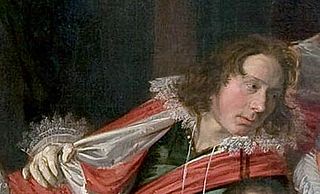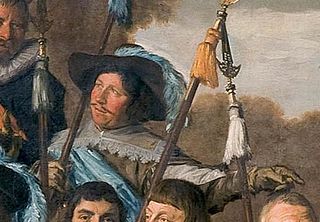
Cornelis Jacobsz Schout (c.1570 – after 1621), was a Dutch Golden Age member of the Haarlem schutterij.

The Dutch Golden Age was a period in the history of the Netherlands, roughly spanning the 17th century, in which Dutch trade, science, military, and art were among the most acclaimed in the world. The first section is characterized by the Eighty Years' War, which ended in 1648. The Golden Age continued in peacetime during the Dutch Republic until the end of the century.

The Haarlem schutterij refers to a collective name for the voluntary civic guard of Haarlem, from medieval times up to the Batavian Revolution in 1794, when the guilds of Haarlem were disbanded.
He was the brother of the judge Jan Jacobsz Schout and the notary Pieter Jacobsz Schout and became the father of the ensign Jacob Cornelisz Schout. He was a lieutenant of the St. George militia in Haarlem from 1612-1615 and was captain 1618-1621. He was portrayed by Frans Hals along with his son in The Banquet of the Officers of the St George Militia Company in 1616 .

Pieter Jacobsz Schout, was a Dutch Golden Age mayor of Haarlem.

Jacob Cornelisz Schout, was a Dutch Golden Age member of the Haarlem schutterij.

Frans Hals the Elder was a Dutch Golden Age painter, normally of portraits, who lived and worked in Haarlem. He is notable for his loose painterly brushwork, and he helped introduce this lively style of painting into Dutch art. Hals played an important role in the evolution of 17th-century group portraiture.















